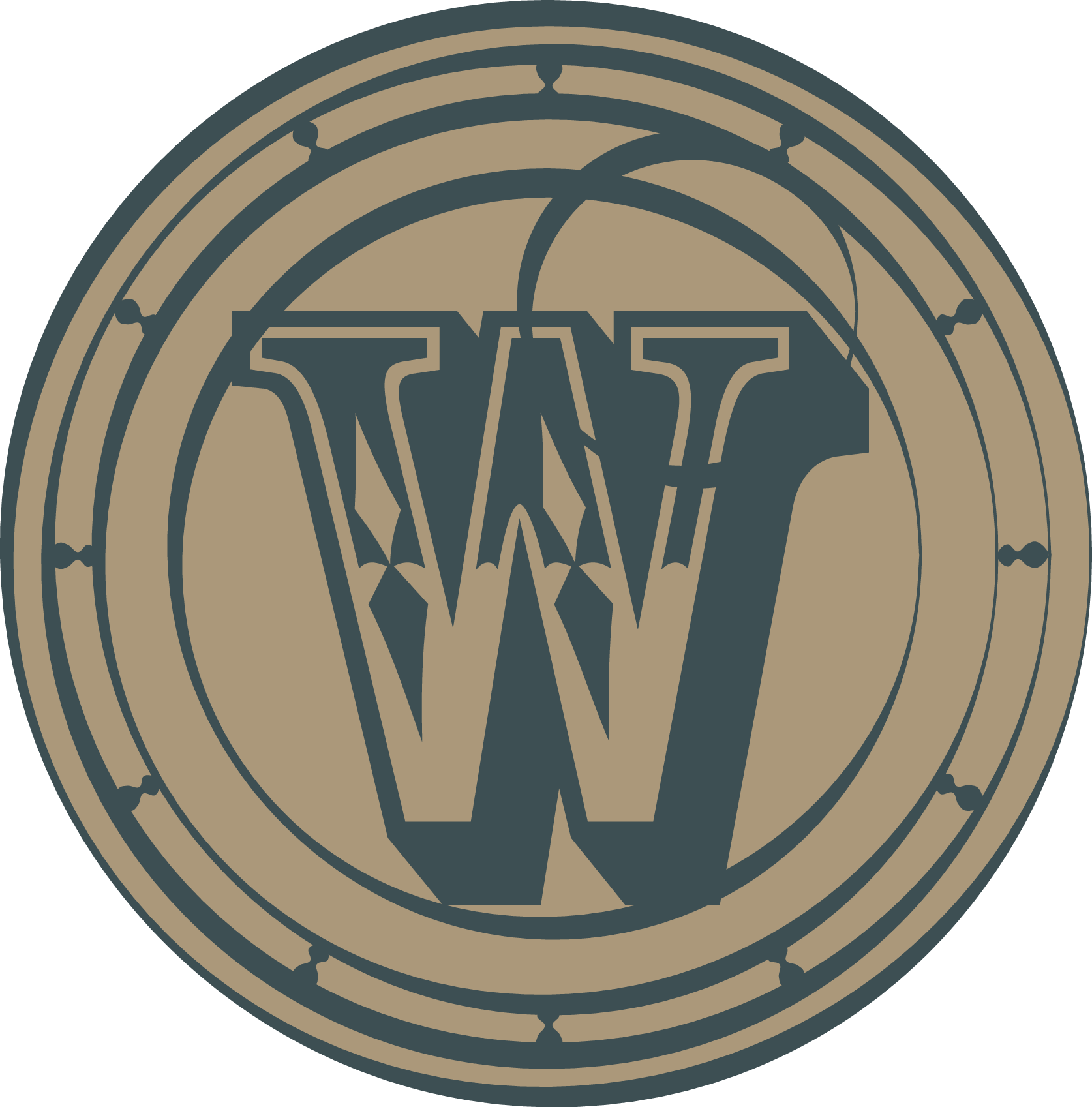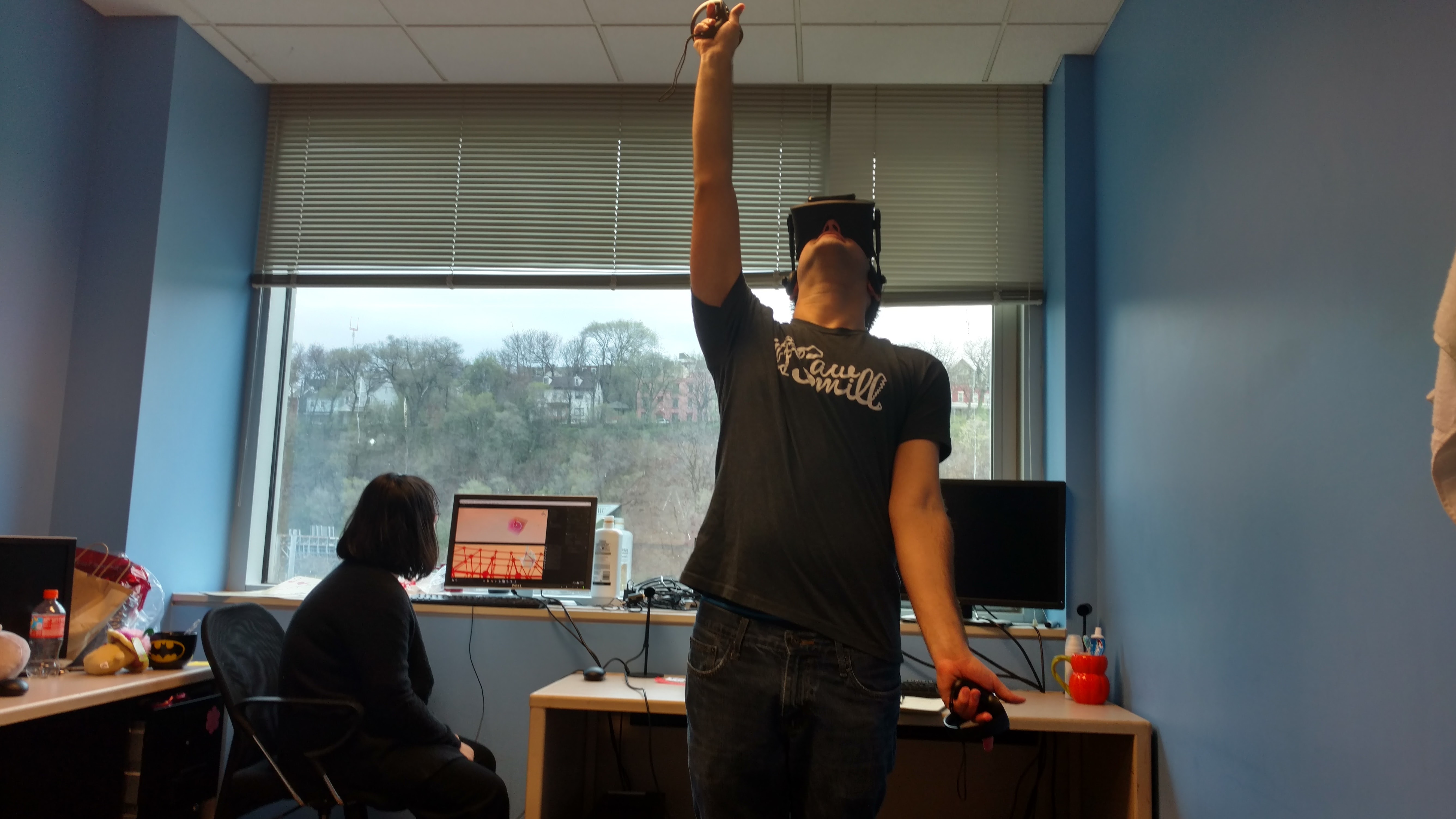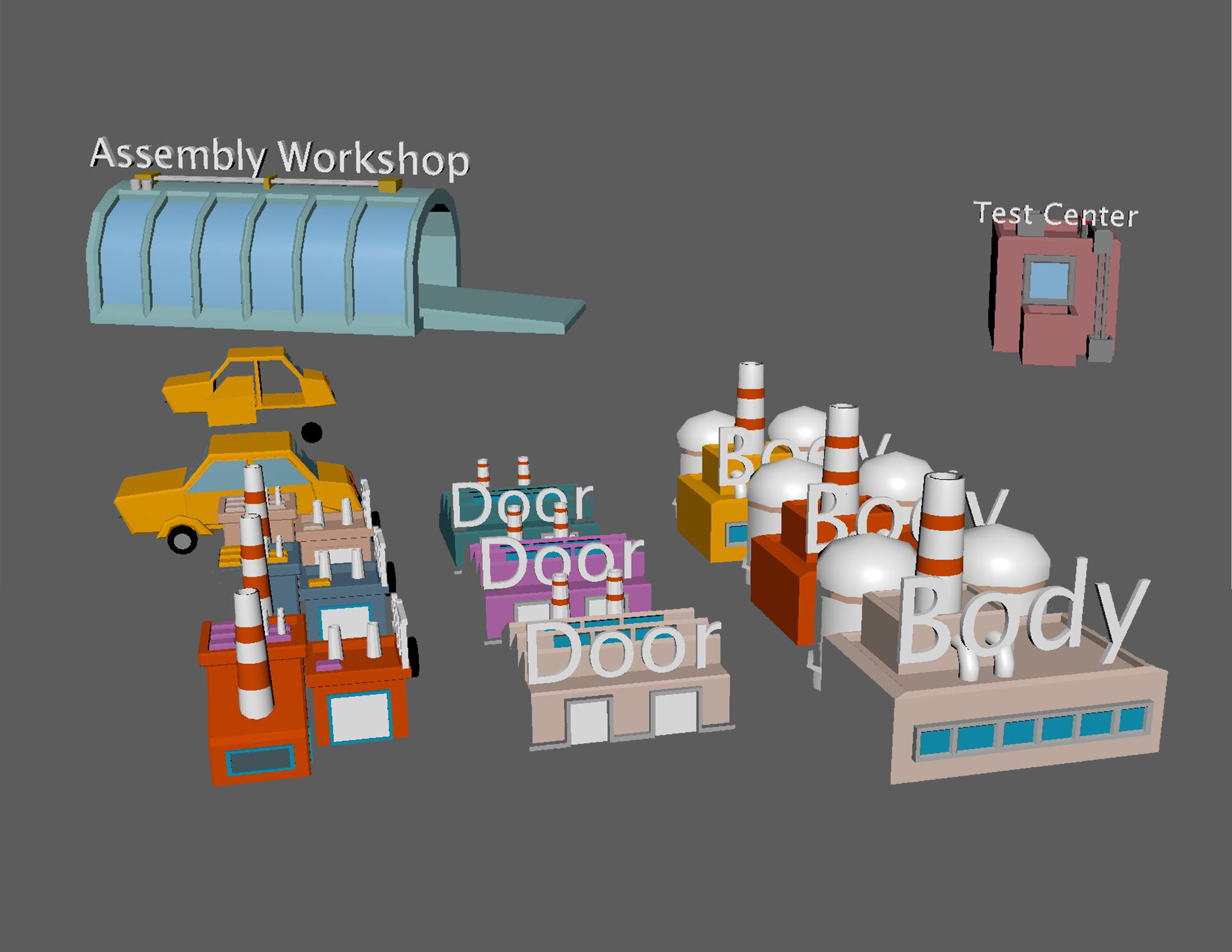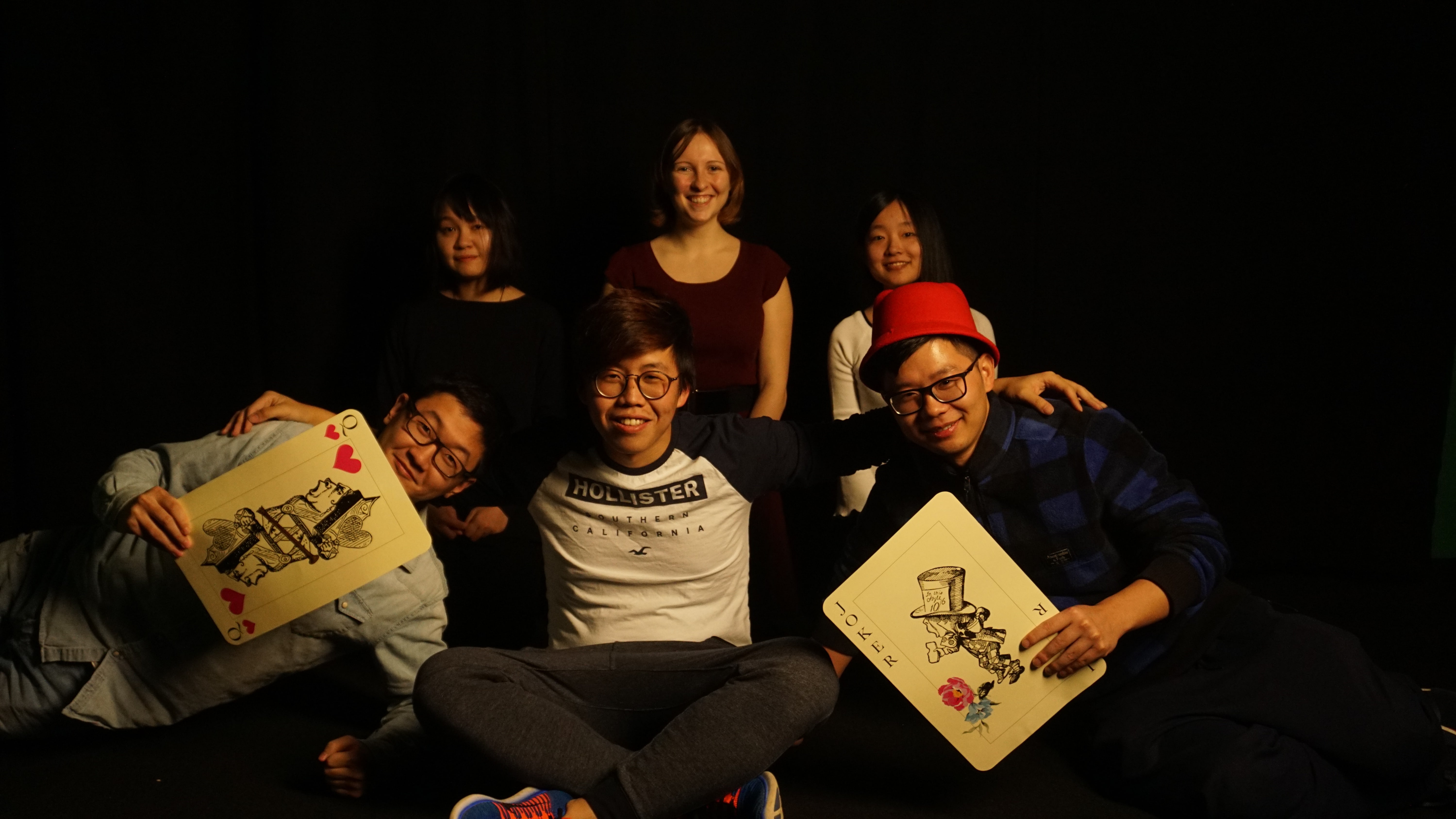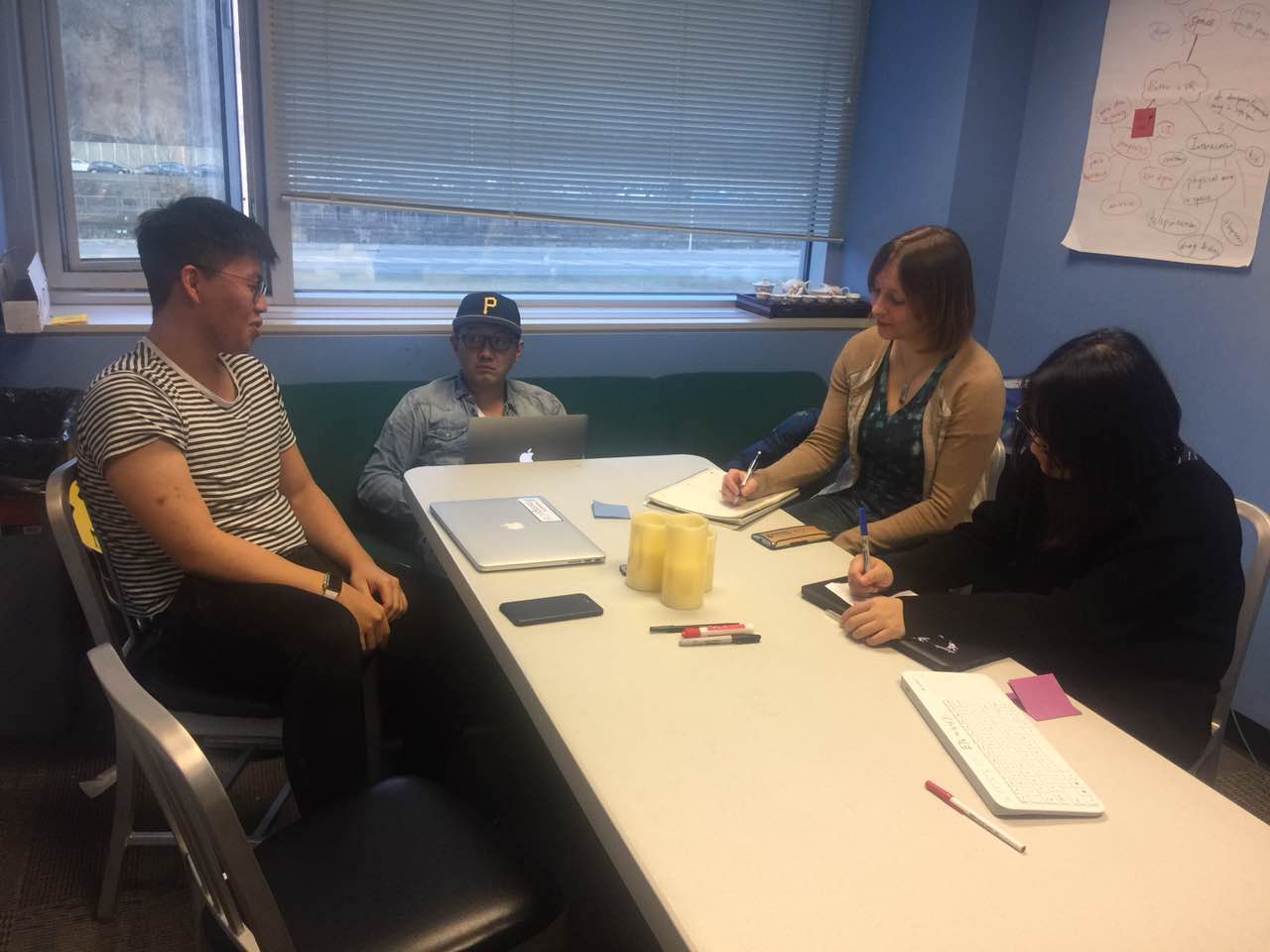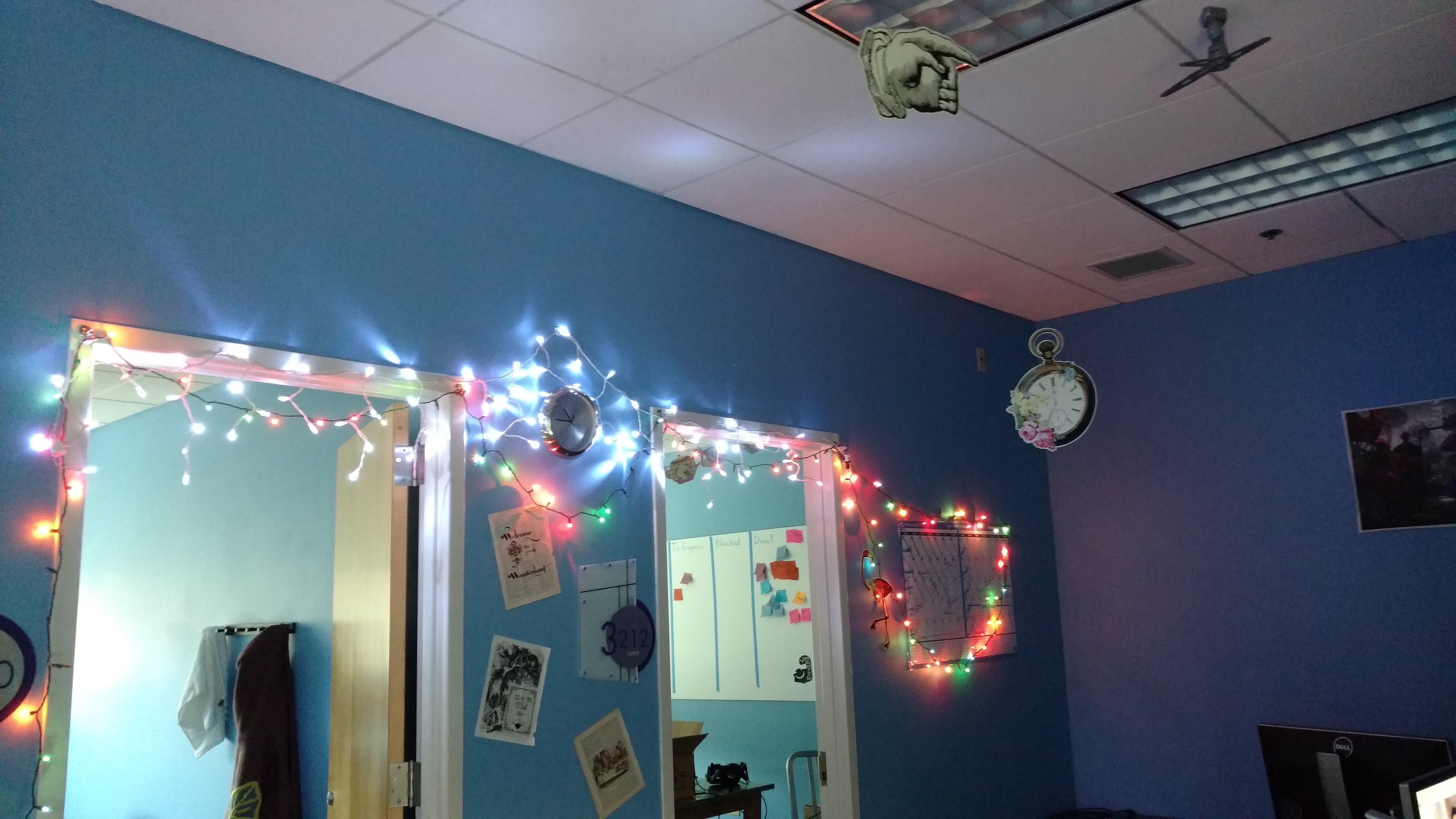Despite half-semester presentations being over, this week was somehow just as busy as last week. This was largely because not only did we select and start work on two new prototypes, but we also needed to prepare for ETC Playtest day on Saturday. That meant revisiting our project goals to make sure we’re all still on the same page (and still matching up with our client), figuring out what we wanted to learn from the playtest (our first with grade-school students), planning the playtest, testing the plan, and reworking the plan until we had something that worked. All in all, it was a very productive week, even if it was unexpectedly busy.
New Prototypes
At the beginning of the week we selected the last two prototypes we’ll be developing out of our pool of viable ideas. They are the Color Cube and the Clothing Shop. Additionally, we made a couple of minor tweaks to the Buggy Factory and Flying Flags prototypes to get them ready for playtesting with students.
Clothing Shop
In the clothing shop prototype, guests will be able to create clothing for mannequins by sending various combinations of designs, fabric, color, and patterns to neighboring shops. Each shop can take only specific types of items and will send a specific type of item back. This prototype is intended to be an illustration of parameter passing that will make the concept of sending information or objects between pieces of code more concrete. We’re hoping that it will be particularly useful as an example to refer back to during a lesson or while working on a problem, with items the correspond specifically and accurately with elements of parameter passing.
This prototype is still in the design phase, with the intention of having a basic playable version early next week. We are spending the extra time to create a thoughtful design that is grounded in the relevant concept and in our goals for it.
Color Cube
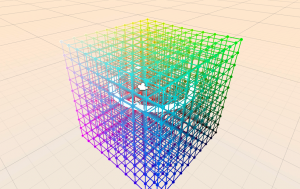 The Color Cube prototype is an illustration of a binary search in which the guest, standing in the middle of a three-dimensional color gradient, will attempt to find a particular color by dividing the cube in two and selecting the half they think contains their target color. This prototype has the added challenge of using an abstract metaphor to explain an abstract concept, which is tricky but also exciting to work on.
The Color Cube prototype is an illustration of a binary search in which the guest, standing in the middle of a three-dimensional color gradient, will attempt to find a particular color by dividing the cube in two and selecting the half they think contains their target color. This prototype has the added challenge of using an abstract metaphor to explain an abstract concept, which is tricky but also exciting to work on.
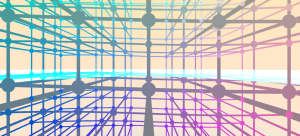 So far, Luna has finished the initialization of the cube itself and the wave function, meaning the prototype is starting to take shape. We’re all excited to see how it comes out!
So far, Luna has finished the initialization of the cube itself and the wave function, meaning the prototype is starting to take shape. We’re all excited to see how it comes out!
Playtest Day!
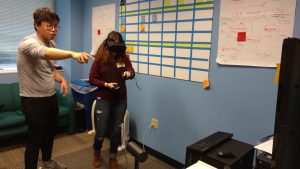 On Saturday, the ETC hosted a large group of students of varying ages for a building-wide playtest day where all of the projects could show what we have so far to non-ETC students for feedback. For us, this meant showing our first prototypes to about 25 12-18 year-olds over the course of about five hours. It took us a few tries to get the procedure right, but ultimately, since we had primarily groups of two playtesters, we settled on running each prototype in parallel so both guests could play at the same time and have plenty of time to get their bearings and experiment with the prototypes. We demonstrated one prototype each round, switching off between groups, rather than trying to rush through all of them in the 20 minutes we had with each set of playtesters. We’re still going through the results for more detailed analysis, but we’ve already learned a couple of interesting things:
On Saturday, the ETC hosted a large group of students of varying ages for a building-wide playtest day where all of the projects could show what we have so far to non-ETC students for feedback. For us, this meant showing our first prototypes to about 25 12-18 year-olds over the course of about five hours. It took us a few tries to get the procedure right, but ultimately, since we had primarily groups of two playtesters, we settled on running each prototype in parallel so both guests could play at the same time and have plenty of time to get their bearings and experiment with the prototypes. We demonstrated one prototype each round, switching off between groups, rather than trying to rush through all of them in the 20 minutes we had with each set of playtesters. We’re still going through the results for more detailed analysis, but we’ve already learned a couple of interesting things:
- These prototypes seem to work best for the high-school aged students. Younger students got how to work the prototypes, but tended not to notice patterns in what they were doing.
- Students need to be able to experiment and play around with the prototypes to really get anything valuable out of them. Simply walking them through the basic interaction and then moving on is not enough. They need time to figure things out for themselves.
Next week we’ll be continuing to develop and iterate on our current prototypes, as well as showing them to more local computer science and technology teachers.
